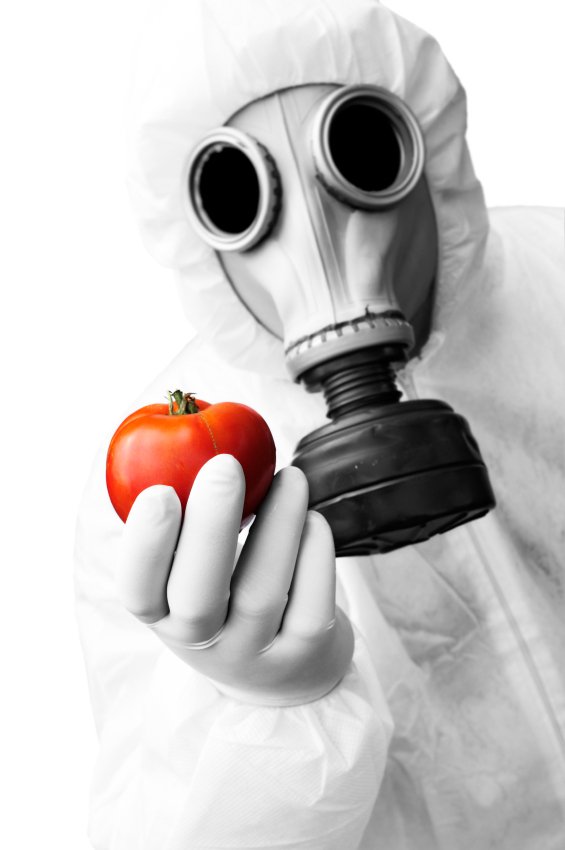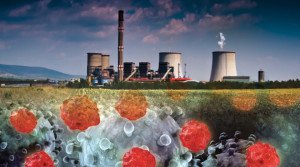What are environmental toxins?
4 min read
We are surrounded by environmental toxins. Substances that may cause distress or disease to our bodies can be found in everything that we eat, in everything that we drink and even in the air we breathe. Some of these compounds are a by-product of an industrialized world. Heavy metals like lead and cadmium are released from factories or are produced as waste substances in the industry. We are also exposed to many naturally-occurring toxic substances.
For example, volcanic eruptions release much of the free mercury that can be found in the environment. Our bodies have a variety of mechanisms for dealing with this toxicity, but the current total load exceeds the body’s ability to adapt. When our bodies fail to break down or remove these toxins, the only other way to deal with them is through sequestration. The body will try to deposit these compounds into tissue to minimize their potential damage. For example, lead may be sequestered into bone, displacing calcium and increasing the risk of osteoporosis. The overall load of these toxins is sometimes called our “Body Burden.”
A high body burden has been implicated in: Immunotoxicity – leading to asthma, allergies, cancers and chronic disease; Neurotoxicity – leading to cognition impairment, memory loss as well as sensory and motor dysfunction; and Endocrine toxicity – leading to reproductive issues, loss of libido and metabolic impairment.
In research published in 2005, New York University School of Medicine researchers provided some of the most compelling evidence yet that long-term exposure to air pollution-even at levels within federal standards-causes heart disease. Previous studies have linked air pollution to cardiovascular disease but until now it was poorly understood how pollution damaged the body’s blood vessels.
Environmental toxicity is a global concern. These pollutants don’t recognize national or political boundaries. As an example, Japan has experienced a phenomenon known as “yellow sands” over the past several years. This is caused by pollution blowing in from Chinese factories across the Sea of Japan.
In the air.
There are now 1460 metric tons of airborne toxins that travel on the jet stream around the world. Because of this there is no place on the planet that can be considered a pristine environment. Facilities in the United States released 4.7 Billion pounds of toxins into the air in 2005- 72 Million pounds are known carcinogens. In 2005 the city of Chicago experienced 68 days when the air quality was too unhealthy for children, elderly and the ill. Coal-fired power plants spew sulfates, nitrates and mercury into the air. These compounds have been linked to more than 20,000 premature deaths each year.
In the Water.
There are an estimated 7 Million illnesses and 1000 deaths each year in the United States from waterborne microbes. Chlorinated chemicals in drinking water from pesticides, herbicides and refrigerants have been linked to increased risk of breast cancer. Cyanobacterial toxins in municipal water have been linked to illness and disease worldwide. Sewage treatment plant workers are at much higher risk of respiratory illness, skin rashes, headaches and body aches.
In our Food.
Environmental toxins work their way into the food chain. As of late 2005, 47 states have advisories to limit intake of freshwater fish due to mercury contamination. In 2005, the FDA reported finding chlorinated pesticides, like DDE (dichlorodiphenyldichloroethylene – a breakdown product of DDT), in 63% of foods surveyed. Pesticides and Herbicides in food have been linked to many cancers.
The most surprising thing about our body burden is that we are at risk even before we are born. A study conducted in 2005 by the Environmental Working Group in cooperation with the American Red Cross examined the umbilical cord blood of newborns. They found that the average newborn has 200 different industrial chemicals, pollutants and pesticides in their blood. These included over 70 known carcinogens (toxins that may cause cancer). Other studies have found high levels of the metals cadmium and mercury in the breast milk of nursing mothers.
As we grow up we are exposed to seemingly benign compounds that are even meant to benefit us but have been shown to have long-term negative consequences. For example, Fluoride in our drinking water has been linked to Osteosarcoma and Hypothyroidism. Additionally, vaccinations which undoubtedly prevent disease may contain the mercury compound Thimerosal which has been linked to the rise of autism in children.
What can be done? We need to look at both prevention of toxicity and dealing with the inherent rise in body burden that has occurred since birth. A healthy diet high in raw foods has been shown to be beneficial. Of course, make sure that you wash these foods to remove pesticides and herbicides that cling to the surface of fruits and vegetables. Air purifiers may remove particulate matter and lower your exposure to some of the airborne toxins. Lastly, avoid seafood which has been shown to have higher mercury levels – like tuna steak, marlin and sea bass.
Aside from limiting our exposure we should all be actively aiding our bodies in the elimination of these toxins. Most programs for systemic detoxification begin in the digestive tract with products that act either as laxatives or diuretics. These include the ubiquitous colon cleanse products. By helping our bodies to remove waste quickly, it may aid in lowering body burden over time.
For more information on the toxic environment see the following:
- The Environmental Working Group: www.ewg.org
- The Centers for Disease Control and Prevention: www.cdc.gov
- The Environmental Protection Agency: www.epa.gov






